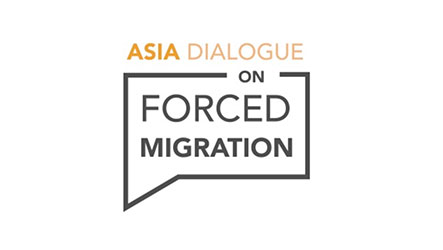The number of people projected to be displaced by environmental degradation by the year 2050 is expected to exceed 150 million[i]. To place that figure into perspective, the latest refugee numbers issued by the US Committee for Refugees and Immigrants total 13.6 million. Despite this potential for suffering, one significant obstacle prevents international cooperation — consensus. There is no general agreement on the definition or scope of the problem. Currently, no global treaty or compact recognises those displaced by the effects of climate change.
Reaching agreement is made difficult, even at the level of establishing key principles, because of disputes around:
Terminology: ‘Refugee’ – the UNHCR, under resourced and overtaxed by its current mandate, does not want its 1951 Geneva Convention role expanded, any further. ‘Migrant’ – fails to address the enormous ‘push’ elements involved. ‘IDP’ (Internally Displaced Person) – while technically valid for those forced to move within their own borders, fails to communicate the reasons for displacement.
Causality: Is the environmental degradation causing displacement a result of human induced climate change, “natural” climate change or other natural causes, and does this even matter?
Differentiation: How do you distinguish environmental refugees from economic refugees?
Responsibility: Acknowledging these people as refugees implies an international responsibility to provide protection. The UN is more than content to place the onus on individual States for the protection of their citizens.
Current international practice defines environmental refugees as ‘evacuees’. Such practice fails to recognize the human justice element. Poor countries do and will continue to suffer the effects of climate change disproportionately compared to those in wealthy nations. Wealthy nations have contributed disproportionately to the problem of climate change.
International acknowledgement of the existence of environmental refugees is needed, to place pressure on multilateral organisations to respond with resources to address this rapidly emerging problem.
Global recognition of a new category of people forcefully displaced by environmental degradation, in the form of an international treaty, is the first step in this process. Those displaced by environmental degradation require provisional rights and protection, similar in scope to those identified as refugees under the Geneva Convention. Acknowledging such a class of affected people is certain to affirm the seriousness of the problem, and will make it easier to mobilise the social, legal and environmental agency co-operation on an international level that is required to address it.
Australia is well positioned in the international arena to sponsor such a debate, especially as it moves forward with its 2013-2014 non-permanent UN Security Council candidature. Sponsoring and participating in a debate internationally would also require Australia to formulate its response to climate change refugees as a domestic issue. Along with the aging of our
population and the rate of world population growth, the rise in climate change refugees will inevitably create pressure on Australia to take in many more immigrants over the next 40 years.
Further reading:
Environmental Justice Foundation Report on Climate Refugees Nov 2009: No place like home http://www.ejfoundation.org/pdf/climate_refugees_final.pdf
European Union Synthesis Report May 2009: Environmental Change and Forced Migration Scenarios http://www.each-for.eu/documents/EACH-FOR_Synthesis_Report_090515.pdf
[i] Myers, N. (1993).
Environmental refugees in a globally warmed world. Bioscience, vol. 43,
no. 11.



